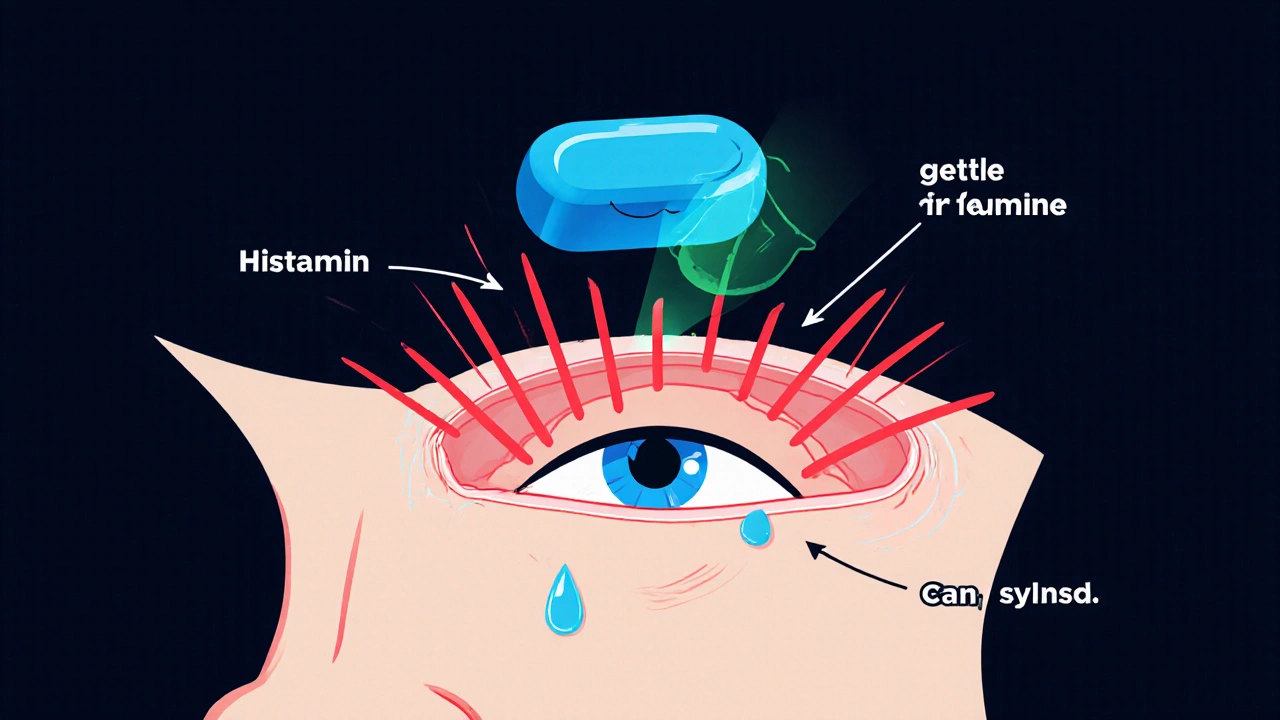Claritin (Loratadine) vs. Other Allergy Meds: Comparison Guide
A clear comparison of Claritin (Loratadine) with Zyrtec, Allegra, and Xyzal, covering effectiveness, onset, drowsiness, price, and safety tips.
Claritin, an over‑the‑counter antihistamine that blocks histamine receptors to ease sneezing, runny nose, and itchy eyes. Also known as loratadine, it’s widely used for seasonal allergies. If you’ve ever searched for fast, non‑sedating relief from pollen or pet dander, you’ve probably grabbed a bottle of this pill. Below we’ll unpack why it works, who should consider it, and what other options exist.
Antihistamine, a class of drugs that counteract the body’s histamine response, reducing itching, congestion, and watery eyes. Claritin is a type of antihistamine, meaning it sits on the H1 receptors and stops histamine from triggering those annoying allergy symptoms. The drug’s non‑sedating profile makes it a favorite for daytime use, unlike older first‑generation antihistamines that can make you feel drowsy. Understanding how antihistamines function helps you pick the right one for your specific triggers.
Seasonal allergic rhinitis, inflamed nasal passages caused by airborne allergens such as pollen, mold spores, or dust. This condition is the main reason people reach for Claritin. When the immune system overreacts to these particles, it releases histamine, leading to the classic runny nose, sneezing, and itchy throat. Antihistamine treatment reduces the severity of seasonal allergic rhinitis, allowing you to enjoy outdoor activities without constant tissue‑pulling.
Typical dosing is simple: one 10 mg tablet once daily for adults and children over six. Taking the pill with water, preferably with food, can help minimize stomach upset. Consistency is key—missing a dose can let symptoms creep back, while daily use maintains steady blood levels for continuous relief. For those who prefer not to swallow a pill, a chewable form is also available.
Side effects are generally mild. The most common complaints are headache, dry mouth, or a subtle taste in the mouth. Because Claritin is non‑sedating, you won’t usually feel sleepy, but a small number of users report dizziness or fatigue. Serious reactions like rash or swelling are rare but require immediate medical attention.
Drug interactions matter, especially if you’re on other prescriptions. Claritin can affect the metabolism of certain medications such as bupropion, a drug highlighted in our post about off‑label uses for schizophrenia. Combining antihistamines with alcohol or central nervous system depressants can amplify drowsiness, even though Claritin itself is low‑sedating. Always check with a pharmacist or physician before mixing meds.
Looking for alternatives? Azelastine nasal spray, discussed in our heat‑allergy relief article, offers a fast‑acting option for those who dislike oral pills. Cetirizine (Zyrtec) provides slightly stronger relief but may cause mild sedation for some. For pregnant or breastfeeding individuals, doctors often recommend Claritin because it’s classified as pregnancy‑category B, indicating no proven risk to the fetus. When switching between antihistamines, give your body a day to adjust to avoid overlapping side effects.
Choosing the right allergy solution depends on your lifestyle, trigger severity, and any existing health conditions. Whether you need a daily tablet, a quick nasal spray, or a medication that won’t interfere with your heartburn remedies—like the tips we share for pregnant moms—there’s a fit for almost every scenario. Below you’ll find a curated list of articles that dive deeper into specific uses, dosing strategies, and comparisons, giving you the tools to manage your allergies effectively.

A clear comparison of Claritin (Loratadine) with Zyrtec, Allegra, and Xyzal, covering effectiveness, onset, drowsiness, price, and safety tips.